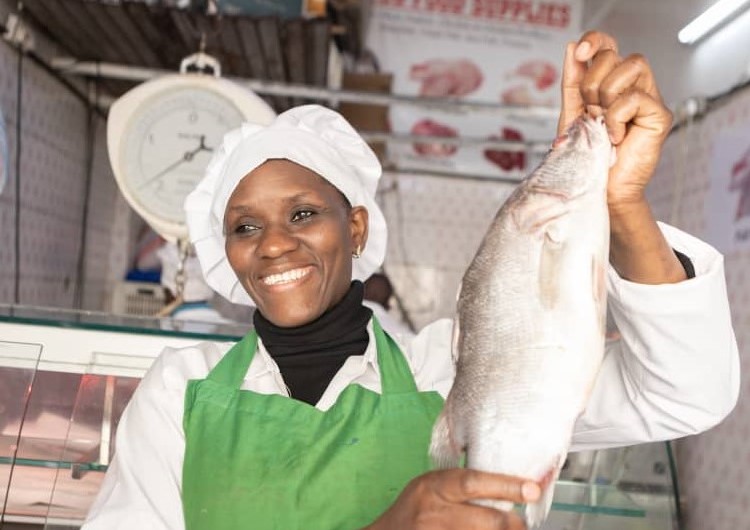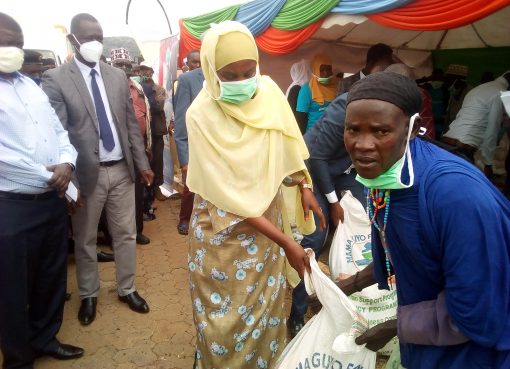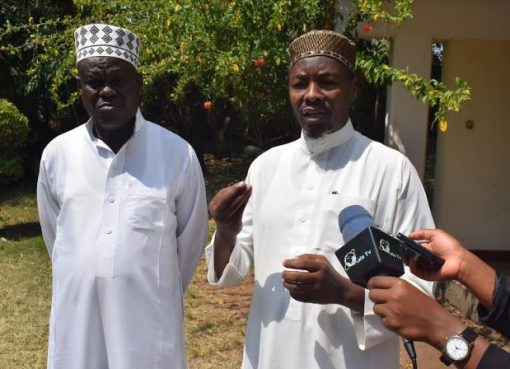The government is putting in place laws and regulations to enable small scale fishermen transition into commercial and industrial growers.
Rodrick Kundu, a Director in the State Department for Fisheries, Aquaculture & Blue Economy said the law encourages joint ventures where local people can partner with investors to exploit the potential that is in the oceans.
Speaking Tuesday during a meeting on climate change link for effective management and governance on matters Eco- fish, Kundu said that the government has recognised fisheries, aquaculture and blue economy as key sub sectors that contribute to national development.
The new laws have also ushered in new institutions such as the Kenya Fisheries Service, Kenya Fish Marking Authority and Fish Levy Trust Fund for purposes of sustaining mechanisms and also Kenya Fishing Industrial Corporation that is promoting blue economy and Kenya Coast Guard Service for protection of marine resources.
Kundu said that currently Kenya is only harvesting 25,000 metric tonnes of fish from the ocean against a potential of 150, 000 to 300,000 metric tonnes a year.
He however said that the government has put in place reforms in policy, legal and institutional framework to create an enabling environment for improving the performance of fisheries.
“We are building capacity for the youth, so that they can venture into deep sea fishing and get employment in the vessels operating in our oceans,” he said adding that the youth are switching to fisheries for economic reasons and emphasized that training them can help them have a role along the value chain to reduce pressure on fishing grounds.
He further said the government is also investing in infrastructure that will support value addition and cited Liwatoni fish landing site operating in Kenya’s territorial waters, Shimoni Fishing Port for large-scale exploitation of the fishing industry, bolstered by a ready market and value addition as well as Lamu market renown for tuna fish, that have contributed to fish handling and created confidence in consumers.
Kundu reiterated that the blue economy is wide and has many sectors adding that currently the government has initiated a blue economy strategy that brings on board all sectors to synergize and agree on sustainable utilisation of marine resources.
“The first thing we are doing now is to have in place a marine spatial plan that will define the space for each sector to minimise conflict and any exploration that is going to be undertaken has to follow the procedures of EIA so that it is not harmful to other sectors of blue economy,” Kundu explained.
Kundu noted that the ocean sinks carbon dioxide that pollutes the environment but added that proper management of the coastline and especially the mangrove has helped in trapping the carbon dioxide from the area and utilising it for other purposes under the plant system.
“The investment the government is doing now is enabling and creating a good environment that will see us in a few years increase fish production and address our deficit which stands at 500,000 metric tonnes per year,” Kundu said.
Dr Soobaschand Sweenarian, the Technical Coordinator of the Ecofish programme that strives to ensure the sustainable management of fisheries resources of the Eastern Africa, Southern Africa and Indian Ocean region said developing countries are still lagging behind in terms of funding climate adaptation.
“It is high time that countries in the region mobilised their own resources because the opportunity cost of saving lives is much higher than the tug of war going on internationally regarding climate finance,” Sweenarian said.
He noted that fishermen and communities have a role to play on climate adaptation, adding that they have conducted an in-depth inventory of potential socio-economic impact of climate change on small scale fisheries, how it’s impacting life and livelihoods of local communities.
“We are in this meeting looking at the instruments, the existing institutional policy and legal framework that are in place and see how we can build on that to enhance our capabilities to address climate change in a better way,” Dr Sweenarian said.
Christopher Mulanda Aura, Director in charge of Fresh Water Systems Research in Kenya Marine & Fisheries Research Institute (KMFRI) said that out of the 150,000 metric tonnes of fish produced in the country, the inland systems account for 80 per cent of the catch and specifically Lake Victoria producing 70 per cent which is 115,000 tonnes on average annually.
He added that aquaculture in turn produces 24,000 metric tonnes while the ocean produces between 7,000 to 12,000metric tonnes of fish.
“This meeting is addressing how climate change is affecting fisheries and fishery production and how it has manifested in different forms,” Mulanda said.
He conceded that climate change has affected oxygen levels in water, increased salinity cases and also the alkaline situation and added all this has affected fish production.
“Climate change comes with increased temperature and this will make fish struggle to reproduce since they need optimum temperature. Shrinking of breeding grounds of fish is also affecting survival of the small fishes,” Mulanda said.
Launched in July 2019, the Ecofish Programme funded by the European Union was adopted by the five Indian Ocean Commission (IOC) member states and three Eastern and Southern Africa countries (Kenya, Mozambique and the United Republic of Tanzania).
It is poised to impact a significant shift in the regional fisheries landscape by addressing the root causes and problems of overfishing and unsustainable fishing practices, as well as the degradation of fishery ecosystems.
By Wangari Ndirangu





